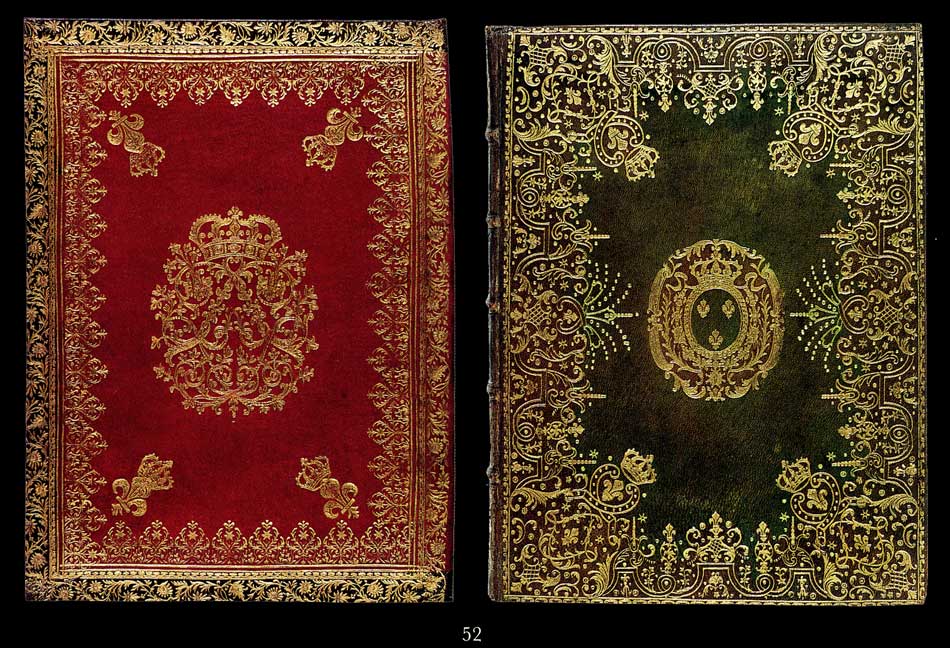

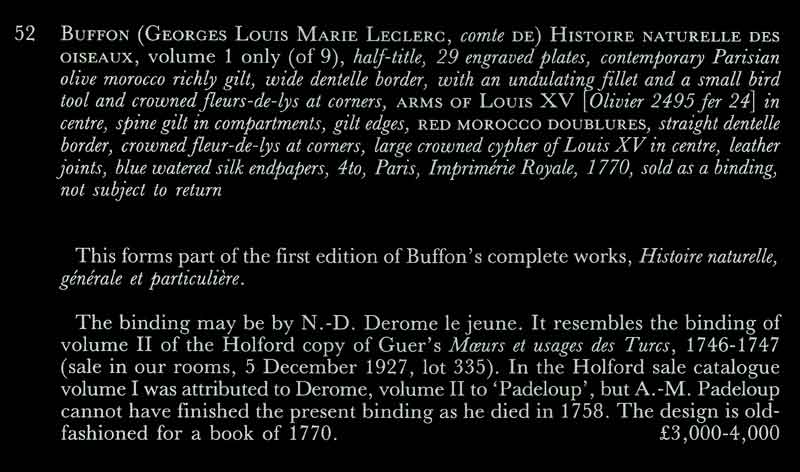
| The binding reproduced above is found in a 1990 Sotheby's auction catalogue (London, 20th November 1990), Below it, I show also the item's description (#52). From a preceding page we can recognize this binding as a Dubuisson, the tools used and the design of the dentelle match a number of similar bindings, The major important difference is that these bindings all appear to have been produced within Dubuisson's lifetime, concentrating around 1746 to 1749, whereas Sotheby's item 52, is clearly from a later date, (1770 or later). This is a serious conundrum and even the auction specialists seem a bit puzzled. As we have pointed out on the previous page, this type of binding had in the past been attributed to Padeloup, and yet as Padeloup was long dead by 1770, they propose Derome, but admit that the style of the binding and doublure, seem older. |
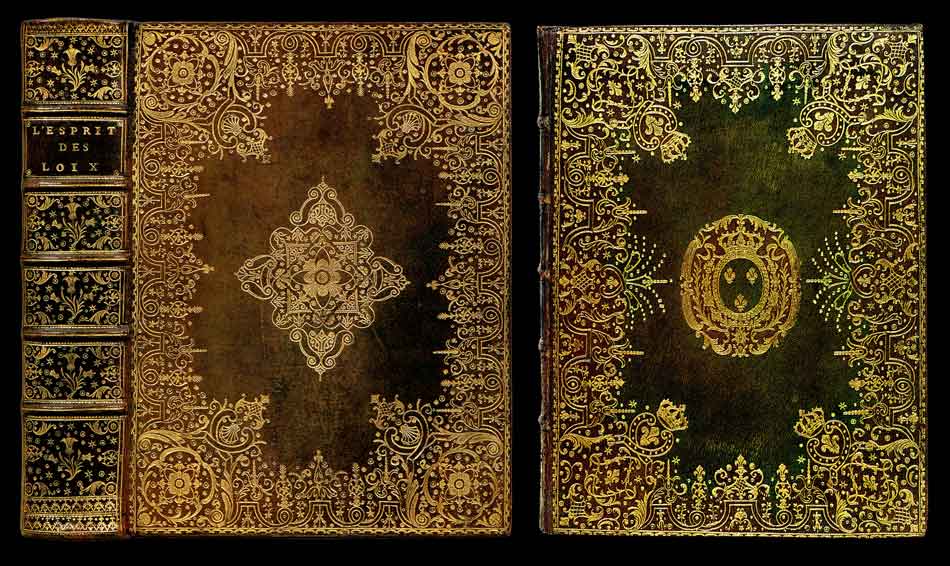
| Probably one of the closest Dubuisson examples to this 1770 binding is the 1749 L'ESPRIT DES LOIS shown above, in Comparative Diagram 1 (see more about this binding). The two bindings are about the same size and the design of the dentelle very similar. Below in Comparative diagram 2, I show an enlarged detail, where we can see just how similar the design is. |
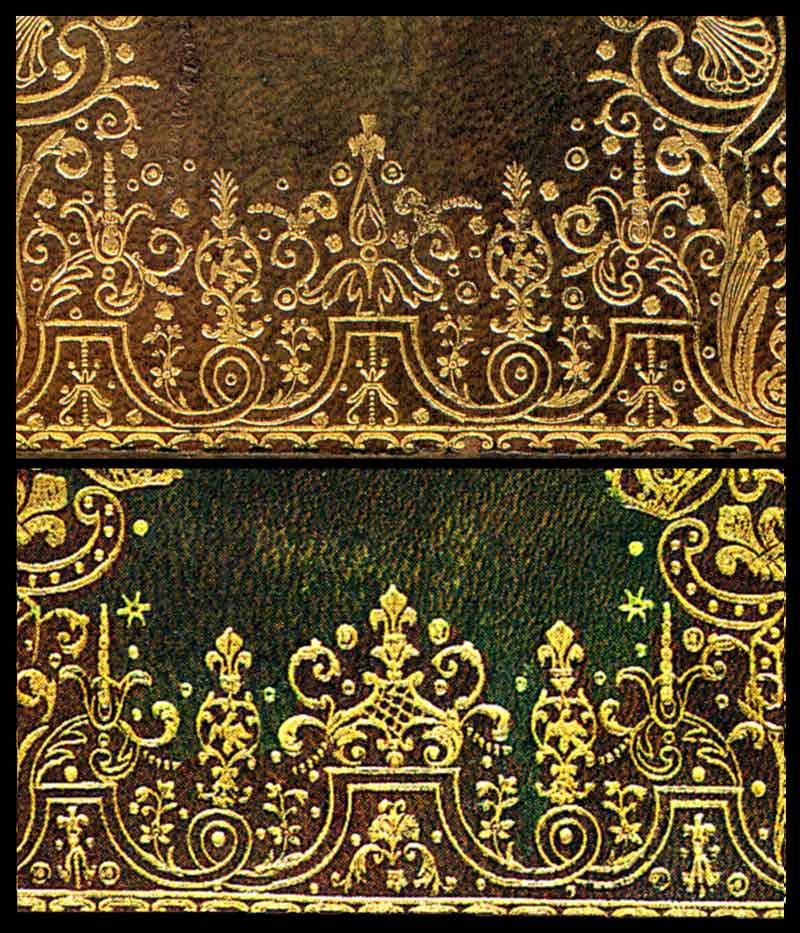
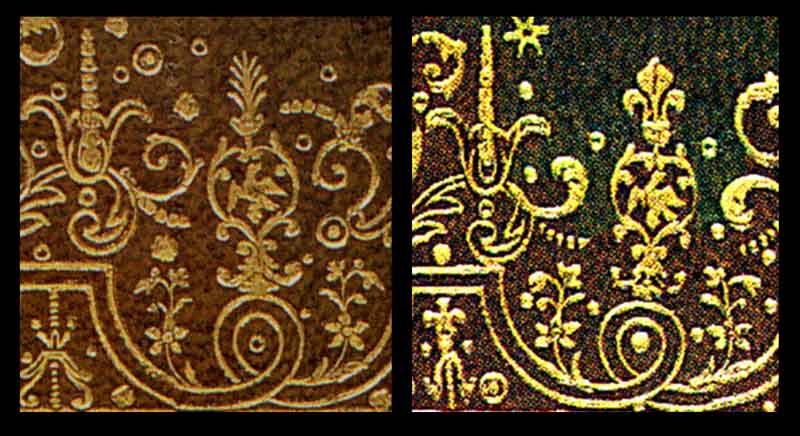

| In the enlarged detail we can see that the same tools have been used however one or two imprints seem differ. The most obvious is pd-21a and 21b, our Dubuisson catalogue type models for these imprints are shown below in Comparative Diagram 5. |
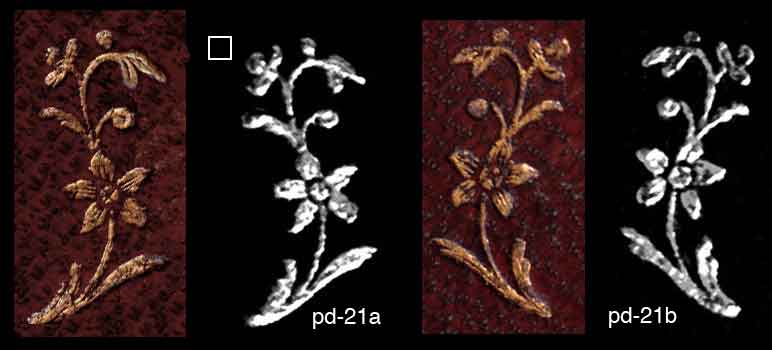

| You can observe in the overlays of Comparative Diagram 6, that the 1770 imprint does not match up well, in fact it is missing the upper bud. As we do not know exactly the size of these bindings, scale could be an issue however the missing bud confirms that this is not the same tool. Notice how well the 1749 imprint overlay matches the pd-21a type model. |

| We can now proceed to look at the 1770 Doublure, where we find significant differences compared with the work of Dubuisson two decades earlier. However these differences are not at all obvious, a great effort has been made to copy tools that were perhaps worn out by heavy use. In Particular the outer roulette, here we see what appears to be the same roulette that was used on the Dubuisson fanfare plaque bindings. Click on Comparative Diagram 8, below to see an enlargement, study closely the roulettes where they are side by side, probably you will think that this is the same roulette. |
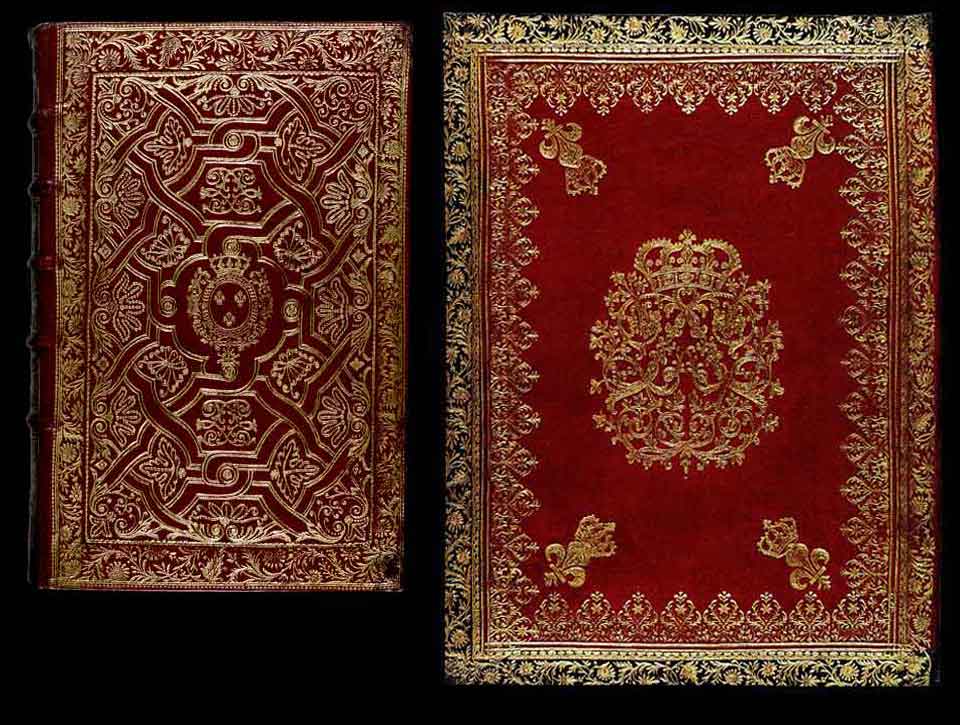
| However when you compare these roulettes under magnification, you discover that a few small details have been ommited, as can been shown in the overlay diagram below. The small green arrow is pointing out a portion of the detail where some more obvious differences can be pinpointed. I must say though that in the main this roulette has been copied with amazing skill, I doubt whether many specialists would even notice that this is not the same roulette. |
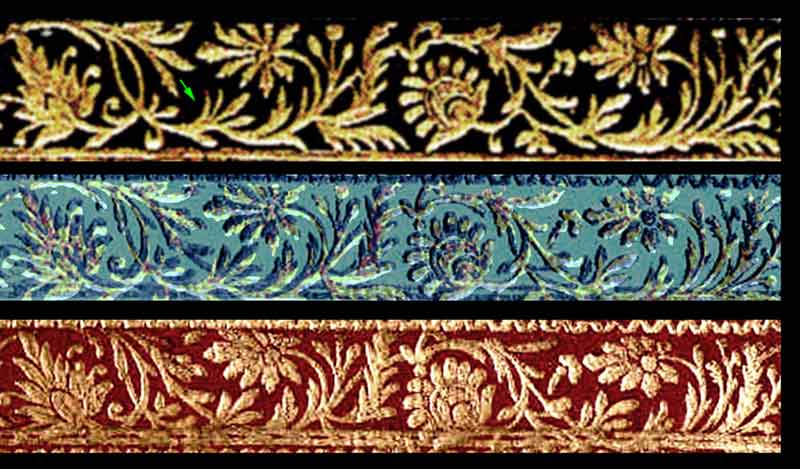
| Next we come to examine the inner part of the doublure dentelle, here we see what looks to be a familiar tool. In the Sotheby's auction details given for the 1770 binding , (shown at the top of this page) we find mention of a similar binding found on a copy of Guer's Mœures et usages des Turcs 1746-1747. By good fortune I found another of Guer works in a Dubuisson binding. This is found in a 1988 Drouot auction catalogue, Bibliothèque of Edgard Stern, Paris, Lundi 27 Juin 1988. Initially I recognized this binding as being the work of Dubuisson by the tools used on the spine. (see this page for more details on these tools.) I show this binding below in Comparative Diagram 10. The dentelle looks the same however on closer examination we discover slight differences |
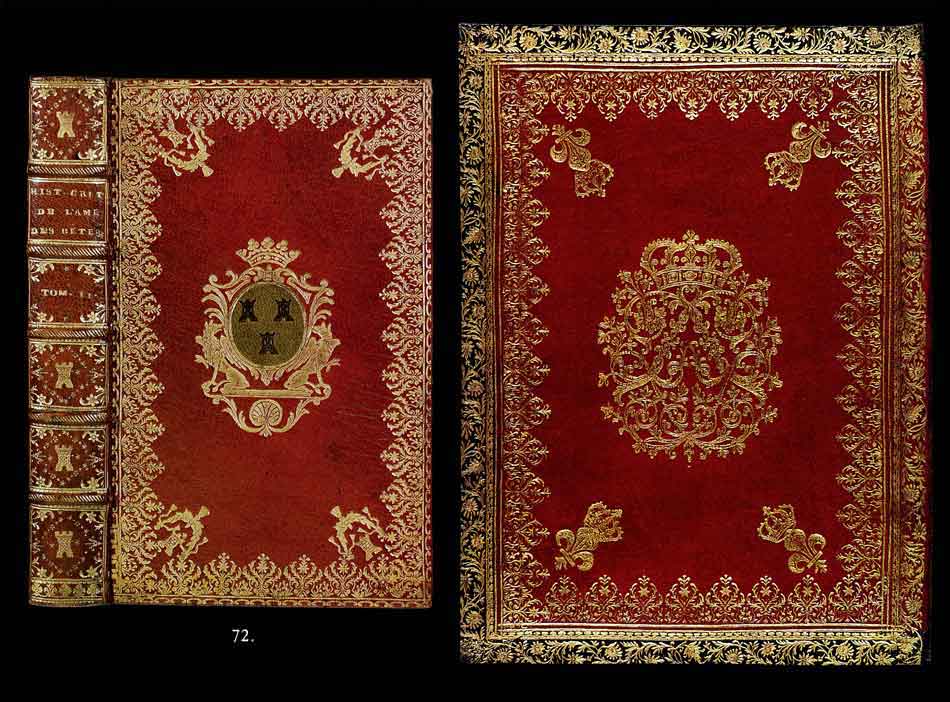
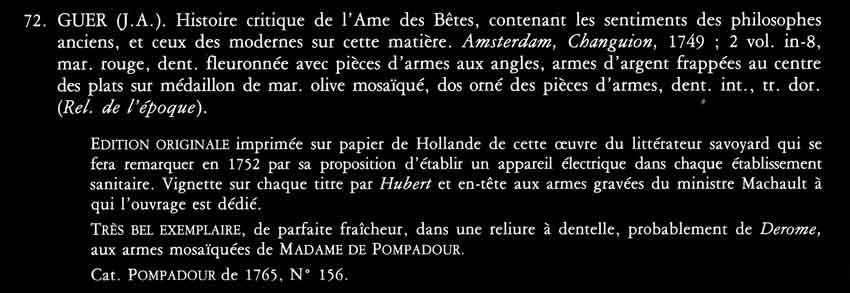
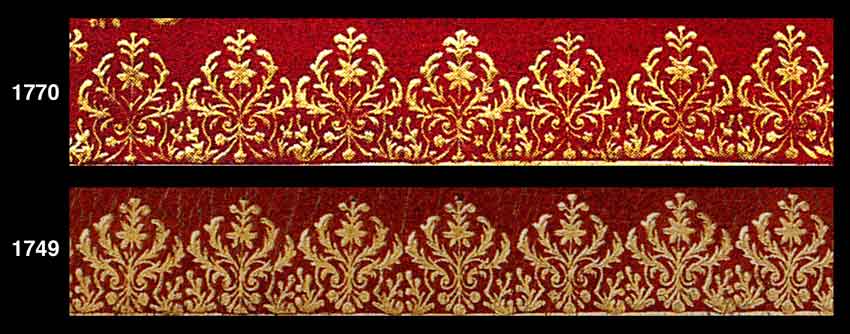
|
In Comparative Diagram 11, we can see just how similar these two roulettes are. It may be the amount of gold left by the new 1770 tool was significantly less than the older tool, thus the imprints are more visibly different, however if you increase the amount of gold left in the imprint you would find that the imprints would then be almost identical. Again, great skill has been employed to create a virtually identical copy of the old tool. There are a lot of things we don't know here, some have speculated that Pierre Paul Dubuisson's father, René Dubuisson kept the shop running after his son's death. (See also Thoinan, 1893, page 266 concerning Dubuisson's wife keeping the business going.) In 1770 there were a number of expert doreurs who could have been employed to do this work, such as Jubert or the MM binder. What is fairly certain however, is the fact that the tools used by Pierre Paul Dubuisson, were still being employed some years after his death in 1762. Perhaps new tools were made to replace the older worn out material and there is no mystery involved, perhaps there was also a desire to retain the style of the tools and overal look of the bindings of the previous decades. Whatever the case this 1770 binding appears as a classic Dubuisson and is not to be confused with the work of Derome. |
| information about the author | return to the home page of VIRTUAL BOOKBINDING |